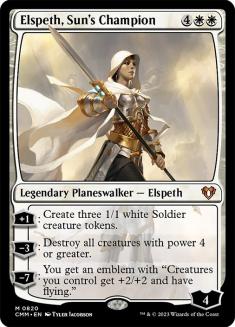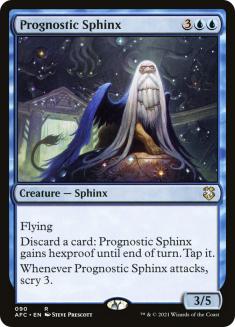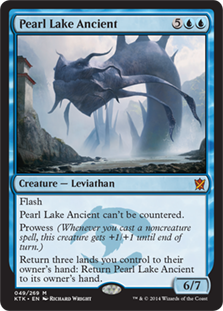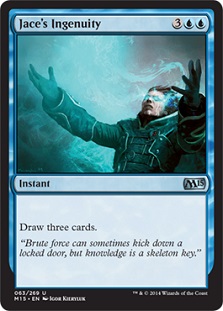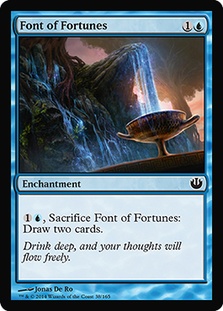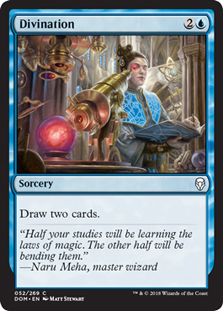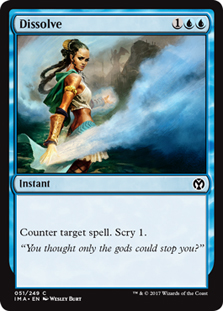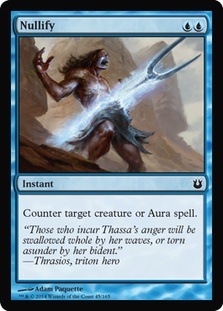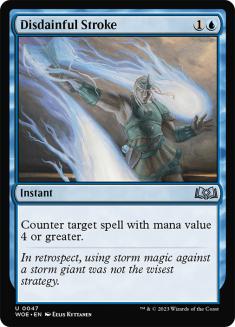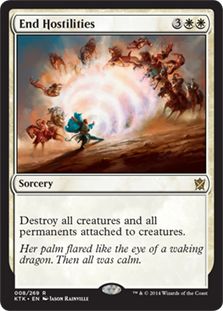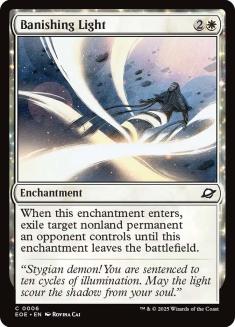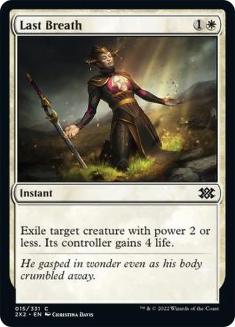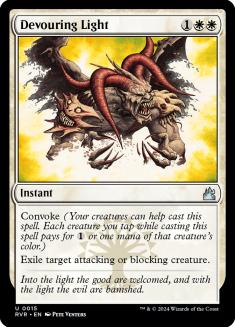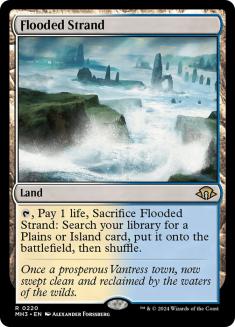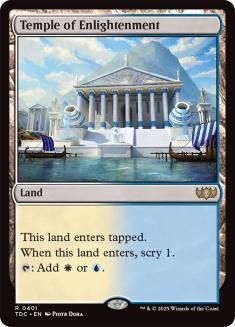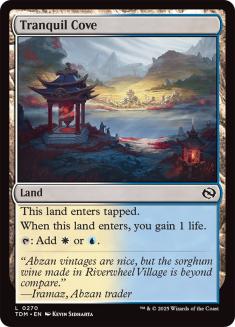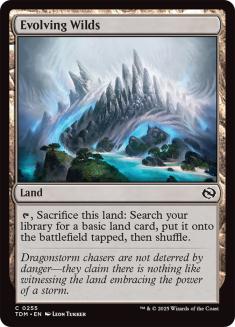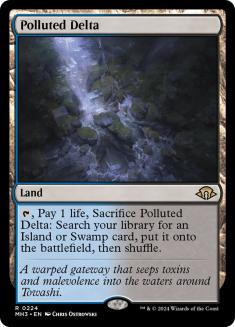They say you just can’t change people.
An old dog can’t learn new tricks.
A leopard can’t change its spots.
And maybe they, whoever they are, are right.
Creatures (2)
Planeswalkers (3)
Lands (27)
Spells (28)

I had tried almost every deck in the format: Green Devotion, U/B Control, Esper Control, Jeskai Aggro, and even Abzan Midrange despite my disdain for
midrange ‘Jund’ strategies. I tried them all, and for the most part I hated them all.
Green Devotion was explosive but inconsistent, and sometimes completely folded in the face of a few removal spells or a sweeper. Sometimes it felt like the
most broken deck in the format as you cast Genesis Hydra for eleven on turn 5, and sometimes you drew a bunch of Voyaging Satyrs and Sylvan Caryatids and
died.
U/B Control lacked any real power to put a game away and could easily watch a game it was in control of slip away if it bricked for a few turns in the
lategame while its opponent drew a few relevant threats. Esper wasn’t much better and had such an awful manabase it was almost comical.
Jeskai Aggro was a deck that I liked, but has such a problem beating the card Siege Rhino (one of the most popular cards in the format) that it was just
embarrassing. Any five toughness creature, for that matter, presented a huge problem for the deck, and a deck with enchantment removal after board would
make you feel very dumb very quickly for putting that Siege Rhino into a Suspension Field.
Abzan Midrage was a deck I knew I was going to hate before I even played it, as it is the quintessential midrange deck. I loathe midrange decks like Abzan
and Jund before it. They do nothing special, don’t create any real card advantage, and just play the best cards they can and hope they are good enough.
So when I saw a U/W Control deck had done well at SCG Minneapolis, I decided to give it a whirl.
After a few games I made some quick changes. The deck definitely needed a 27th land, as missing a land drop was not an option, and I added a Nullify in
place of a Divination because Divination just seemed really bad with so many counterspells. Having a two mana counterspell seemed really sweet, as Nullify
could counter creatures on turn 2 and Disdainful Stroke was nothing short of amazing against most of the decks in the format.
These updates became the list we started the article with, and I took down a 50 person IQ in Brooklyn with it.
Aside-
I’m not one to really stir up trouble, but I just want to publicly state how poorly King’s Games ran this IQ. This was a weeknight IQ on a Tuesday evening
at 6:30pm, which worked out very nicely for me as I had just enough time to get out of work and get there. However, the event didn’t start until well after
8:00pm, and when me and my opponent split the finals it was almost 4:00am. On a Thursday night. When most people have work the next day. I understand
sometimes stores have issues, but King’s Games always has had issues with their events and they really need to step their not so kingly game up.
Despite the logistical issues with the event itself, I was quite happy with the deck. Any matchup against the various midrange decks of the format (Abzan,
Mardu, Naya) were fairly academic, as they couldn’t usually present more than one threat in a turn and were far too slow to get under your countermagic.
The gainlands played a major part in making the Jeskai Aggro matchup quite good as well, as you would often be able to counter a Stoke the Flames and a
Magma Jet simply by playing your lands.
A few days later, I was up at the Premier IQ in Albany to run it back, and I made a few changes. I cut the Divination and an End Hostilities for a
Disdainful Stroke and a Last Breath in an attempt to make the deck a bit less clumsy. While End Hostilities was good, it was a bit slow, and a lot of the
decks in the format only present one big creature threat at a time anyway. I was pretty fortunate to sneak into top 8 at 6-2, but pretty unfortunate to
only cast a handful of spells and get dismantled by Anthony Lowry’s Temur Monsters deck in top 8.
Sunday saw me running it back yet again at a Super IQ in Staten Island, and I again made a few changes. It seemed the only games I was really losing were
the games I stumbled and missed a few land drops, so I decided to add a Divination effect back into the deck in Font of Fortunes. Because the deck now had
a number of two mana counterspells, playing it either turn 2 or turn 4 with two mana open seemed very reasonable. I had also been unimpressed with
Prognostic Sphinx and decided to replace them with a maindeck Pearl Lake Ancient and one of the Fonts. Unfortunately, I wasn’t in a very good frame of mind
for this event and did not play very well.
Still, in a sample size of three tournaments, a win (50ish people) and a top 8 (130ish people) is a very reasonable showing for the deck. It’s not quite
there yet though, so lets go over it and see if we can figure it out.
The Threats
Make no doubt about it, Elspeth, Sun’s Champion is the primary reason you want to be white instead of black. Elspeth does such a good job of controlling
the board, the fact that she also wins you the game fairly quickly is just a bonus. A lot of decks are trying to pound in on the ground, and simply can’t
beat the Sun’s Champion. Elspeth is where it’s at and is untouchable.
Prognostic Sphinx, on the other hand, was a card that did not really impress me. The Sphinx spends most of its time on defense, as a five toughness flying
blocker does put a solid roadblock on many of the formats threats. The issue is that you are paying five mana for a hard to kill wall most of the time, and
that mana could be better spent on a cheaper answer to whatever is ailing you. It is also very awkward with End Hostilities, as having to wrath away your
wall/supposed win condition really stinks. A lot of decks have trouble dealing with the Sphinx, but I don’t think this deck is the right place for it.
Pearl Lake Ancient is definitely not the most impressive win condition, as it’s essentially just a hard-to-kill big dumb idiot, but the fact that it is
very hard to deal with makes it a somewhat reasonable inclusion. It is conceivable that a deck with a bunch of Thoughtseizes and Hero’s Downfalls could
kill all three of your Elspeths, and you do need something to actually win the game with. Pearl Lake Ancient gives you a something that also
happens to be fantastic against other control decks.
The Card Draw
Unfortunately, one downside to playing U/W instead of U/B is that our Dig Through Times are worse without Thoughtseize and with Banishing Light instead of
Hero’s Downfall. While Dig Through Time is one of the cards I would most want to draw in any lategame, there were plenty of times I would draw one or two
in the first five turns of a game and helplessly stare at them while I died. I think with the initial manabase I had played at the first IQ I would have
wanted 2.5 Digs, but I experimented with adding a few more fetchlands in another Evolving Wilds and a few Polluted Deltas to try and make Dig better. It is
certainly a very powerful card, but it must be properly supported. I was extremely surprised to see Matthew Nelms top 16 decklist from SCG Oakland having the full 4 Dig
Through Time with the minimum number of fetchlands and only 26 lands. My gut instinct is that he must have had things run very smoothly for him all day to
do so well with this configuration.
Dig Through Time is the kind of card where when its good, its really good, but when it is bad, it can easily be uncastable and lose you the game.
Jace’s Ingenuity is a card I love, and one of the major factors that drew me to the deck. While Dig Through Time is very good, it is still often just going
to be a glorified Divination. Sometimes you just need bulk card advantage, as drawing extra lands is fine too as you are happy to get up to nine lands in
play (enough to cast Elspeth with Dissolve open). Jace’s Ingenuity asks you to build your deck in somewhat of a similar fashion to Sphinx’s Revelation: a
lot of cheap, reactive answers and cheap counterspells. While clearly lacking the lategame potential of Sphinx’s Revelation, playing a Radiant Fountain on
turn 5 and then end stepping a Jace’s Ingenuity does feel almost as good.
The biggest issue with the deck is how to smooth out the early turns. Font of Fortunes and Divination are not very powerful cards, but we need something to
help us transition into the midgame. In a perfect world, Font of Fortunes is much better, but of course, not every game goes perfectly. Divination costing
only three total mana can help you out of a land light mulligan, and getting out of those spots is essential for this deck. I’m still not sure which is
correct, or in what number.
The Counterspells
One advantage this deck has over the old Azorius-based control deck is it has much better counterspells. While Dissolve has been the gold standard for a
while, the old U/W Control deck’s only real other option was Syncopate, which was quite unreliable. Now we get not one, but two two-mana counterspells.
Almost every deck in the format has a good number of very powerful creatures in them, and Nullify is a fantastic answer. It’s cheap, quick, and clean, and
while it does ask a bit of our manabase, we are okay with paying that cost. Almost every deck in the format (save for the extremely aggressive ones) has
many of their most powerful cards in the 4+ mana range, and Disdainful Stroke is one of the cards that impresses me the most. Again it is a card that is
extremely good in bad scenarios, like when your opponent opens up with a turn 3 Siege Rhino or Xenagos, the Reveler on the play before you can have
Dissolve up.
These two mana counterspells are so important because they let you cast a removal spell like Banishing Light or Devouring Light on turn 5 while still
leaving counter mana open, and that extra mana/turn means the world.
The Removal
Our Wrath of God costs five mana, U/B Control’s costs nine mana. It really is that simple. End Hostilities is one of the few sweepers in the format and one
of the only non-conditional ones. While I started at four copies, I have since moved to three because sometimes you get clunked up with five drops and only
really need one sweeper anyway. Many decks play one or two single, big threats which can be answered with more traditional removal.
Speaking of traditional removal, Banishing Light is our go to. Unfortunately, Hero’s Downfall is far superior, but we have to work with what we have. Just
be very aware that the things you banish may not stay there for ever, as Utter End and Erase are both cards that see a reasonable amount of play.
Last Breath is not nearly as good in this format as it was in the last one, but it is our only reasonable turn 2 removal spell option. Unfortunately, while
most decks have targets, they only have a few which means you never really want to draw more than one Last Breath. This creates a lot of tension with the
need to have something to do on turn 2, and I’ve gone back and forth between two and three copies of Last Breath.
Our last removal spell didn’t see much play the first time around, but it does some nice things in this deck. Devouring Light also takes on the role of bad
Hero’s Downfall that can be somewhat awkward with counterspells, but it does have some nice synergy with Elspeth. One of the most enjoyable lines of play
with the deck is playing a turn 6 Elspeth, making three tokens, and saying go. Your opponent sees you tapped out and slams down his Sarkhan to attack
Elspeth, and you calmly tap your three soldier mystics to send Sarkhan into nothingness.
The Lands
One of the nicest things about this deck is how smooth the mana is. While other decks fumble around with all sorts of tri-lands and Temples in an attempt
to assemble their many colors of mana, our lands are quick and clean, and provide us bonuses instead of drawbacks.
While it doesn’t seem like much, I can promise you the lifegain from Radiant Fountain and Tranquil Cove really adds up in a very impressive way. You
usually are about +5 life from your lands every game, which can buy you an entire turn. Radiant Fountain is probably one of the best lands in the format
that is not seeing play because it doesn’t tap for colored mana.
Our other fetchlands are there to help make Dig Through Time easier to cast in the earlygame. Evolving Wilds is another functional tapland, although
definitely not as good as a true dual, while Polluted Delta can team up with Flooded Strand to help fuel delve. The high quantity of basic lands gives us
plenty of untapped sources, and 27 lands is an absolute must in a deck that can’t afford to miss a land drop.
Creatures (1)
Planeswalkers (3)
Lands (26)
Spells (30)

This is where we are currently. Even with my success over the last week, I don’t think the deck is quite there yet, but the core is very powerful. The
counterspells just roll over the midrange decks in the format, and the deck can likely be tweaked for any metagame.
Most importantly though is that I actually enjoy playing the deck. It’s tough, requires careful planning and foresight, and feels very engaging. When
playing many of the clan based decks I just felt like I was jamming my powerful cards and hoping that they overpowered my opponent’s powerful cards, and
that’s not very fun for me.
Give it a spin, and let’s see if we can’t solve these last few issues.

